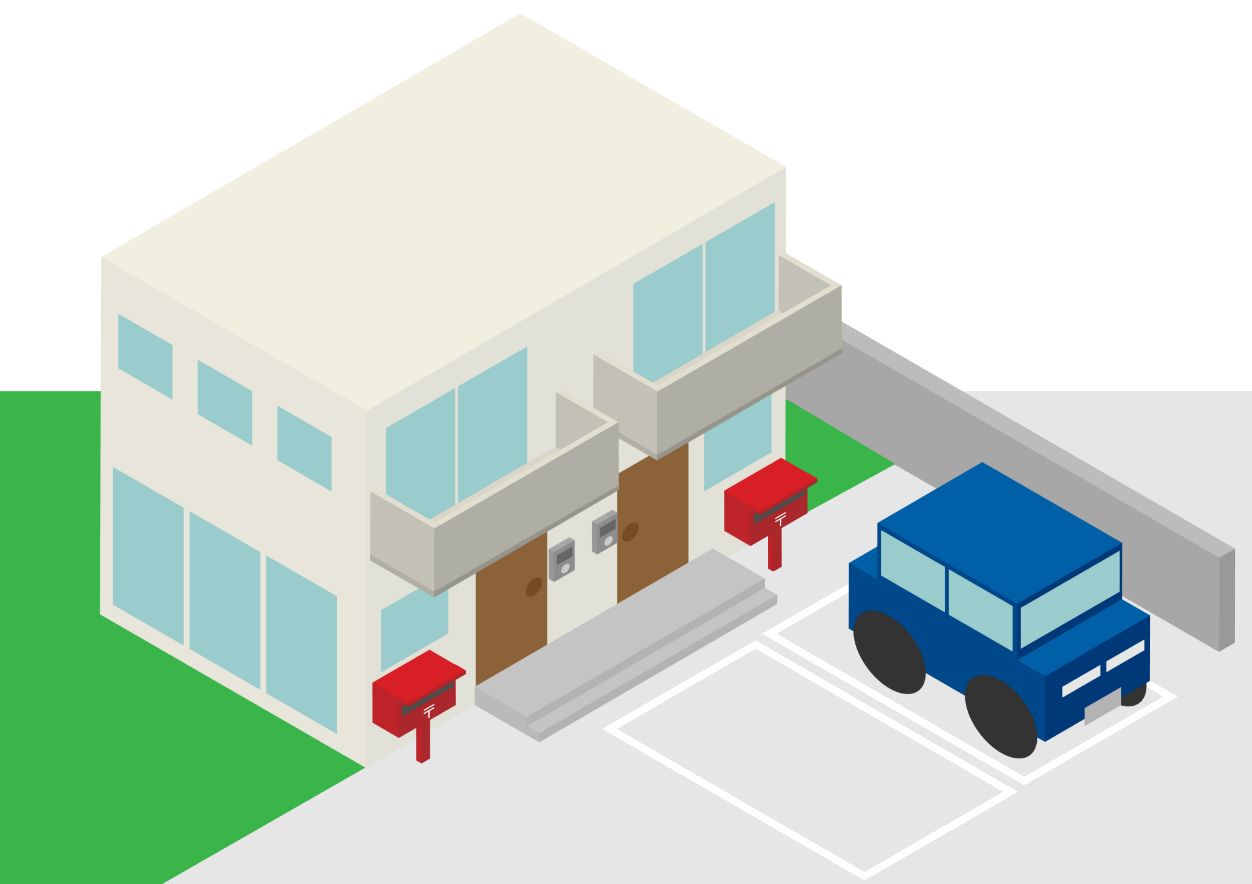Important: PropStream doesn’t offer legal advice. This article is strictly informational. Homeowners interested in converting an ADU into a rental unit should brush up on local zoning laws and consider consulting with a legal professional.
For many aspiring real estate investors, having enough money to put down on a property can be a barrier to entry. But real estate investing doesn’t have to start with buying a house. A more affordable way to get started can be by buying or building an accessory dwelling unit (ADU).
An ADU is a second residential unit that shares a building lot with another home. So, if you already own your primary residence, you may be able to build an ADU on your existing property and rent it out (i.e., house hacking). In turn, you may be able to use the extra rental income to save up for a separate investment property.
In this article, we’ll explore what an ADU is, the different types of ADUs, the benefits of using an ADU for rental purposes, and more.
Table of Contents
- What Counts as an ADU?
- Types of ADUs
- Benefits of Owning an ADU
- ADU Regulations
- What's Driving the Growing ADU Trend?
What Counts as an ADU?
To be considered an ADU, a structure must have all the amenities necessary for living. That includes a bathroom and kitchen as well as standard utilities like water, electricity, and heating. It must also have a separate entrance from the primary home.
An ADU can look like a basement apartment, guest house, backyard cottage, or even a garage or barn (if the necessary elements are added).
Pro Tip: If you’re looking to convert a garage or barn into an ADU, you can use our Rehab Calculator to estimate project costs and help ensure a good ROI.
What all ADUs have in common is that they share a building lot with another (usually larger) primary structure. As a result, they are considered a part of the main home and cannot be sold as a separate piece of real estate.
Types of ADUs

Now that you know what an ADU is, here are the three main types of ADUs:
- A detached ADU (DADU) is structurally separate from the main home. This could be a tiny house, a backyard cottage, or a detached garage that’s been renovated. Most detached ADUs are somewhere between 400 and 800 square feet.
- An attached ADU (AADU) is connected to the main home. It could be an apartment built onto the back or side of the house, for example. Attached ADUs can be a good option for smaller lots that may not have space for a detached ADU.
- An internal ADU (IADU) is an ADU that exists entirely within the primary property. This could be a basement apartment, attic apartment, or any interior space that has been converted into its own living space with a separate entrance.
Benefits of Owning an ADU
As an aspiring investor, building an ADU can offer many benefits. Here are some to consider:
Potential Rental Income
ADUs can be a great source of rental income if your zoning laws allow them.
If you’re able to use an ADU for rental income, you can either rent them out to a long-term tenant via a traditional 12-month lease or put it up as a short-term rental (STR) on platforms like Airbnb and VRBO (make sure to check your local STR regulations since some areas place heavy restrictions or even bans on STRs).
Either rental strategy is a great way to leverage the untapped potential of your primary residence to make some extra cash (and save for a separate investment property!).
Potential Property Appreciation
Another benefit of building an ADU is that it can add value to your home. According to United Dwelling, an ADU can improve the value of your home by up to 30%.
How? An ADU adds extra living space that can serve as a guest house, an office, or an additional rental unit, which makes the property more attractive to future buyers.
As an investor, you may be able to take advantage of this appreciation by selling the property (which now includes an ADU) for a profit when you’re ready to move onto another property.
How to Comply with Local ADU Regulations
Before you start building an ADU, it’s important to check your local zoning laws.
Some areas may not allow ADUs, while others may have limits and restrictions on their size, style, and who can live in them. For example, some housing codes may require that only family members or domestic employees live in the ADU (in which case, you wouldn’t be able to use it as a rental).
Other codes may stipulate minimum lot sizes, a maximum number of occupants per bedroom, and off-street parking restrictions—all of which should be considered.
The key is to do your research upfront, so you don’t have problems after investing time, money, and energy into adding the ADU. Violating city ordinances could result in hefty fines and future problems if you try to refinance or sell the property.
Once you’ve verified your local ADU regulations, you’ll need a building permit no matter where you live. The only time you may not need one is if the structure is uninhabitable and under 200 square feet, which wouldn’t qualify as an ADU anyway.
The best thing to do is to consult a legal professional who understands the local housing regulations where you live and can give you their advice. If you plan to finance the ADU, you’ll want to clear your plans with your lender as well.
The Growing ADU Trend and What’s Driving It

ADUs are on the rise.
According to a July 2020 study by FreddieMac, first-time MLS listings of ADUs have increased an average of 8.6% year-over-year between 2009 and 2019. During that same period, ADU listings as a percentage of total active listings also rose from 3.5% to 6.6%.
ADU rental listings have gone up, too. From 2003 to 2019, the number of active rental listings increased from 1.8% to 4.1%, and the number of leased rental listings increased from 1.2% to 2.9%.
So what’s driving these trends? Several things:
The average American household is shrinking. In 2021, the average number of people living in one house was 2.51, down from 3.33 in 1960. At the same time, the average U.S. house size has increased from 1,500 square feet in 1970 to 2,496 square feet in 2019. Many homebuyers today simply don’t need all that space and prefer to buy something smaller instead.
Additionally, many baby boomers are beginning to downsize as they retire and become empty nesters.
There’s a nationwide housing shortage. As of the fourth quarter of 2020, the U.S. had a housing supply deficit of 3.8 million units. That’s partly because new construction is down due to labor and supply issues brought on by the pandemic. However, construction of entry-level homes below 1,400 square feet has been down since 2008 and hasn’t recovered since. Now, it’s at a 50-year low. With fewer listings on the market, many are choosing to stay with family in multi-generational homes and ADUs.
Housing affordability is down. Across the country, housing has become less affordable due to inflation and rising mortgage rates. Many would-be homebuyers are getting priced out of their market and are choosing to rent instead. For some (especially millennials and younger generations), an ADU rental can be an attractive option because it can offer more privacy and outdoor space than an apartment can.
Short-term rentals are becoming more popular. More and more travelers are choosing to book stays on short-term rental (STR) platforms like Airbnb and VRBO instead of hotels. According to a 2021 U.S. Short-Term Rental Outlook Report by AirDNA, available STR listings are expected to continue rising as they have since 2019 (aside from the minor slump in 2020 brought on by the pandemic). In addition, many STR guests are interested in properties like ADUs that offer unique experiences. Case in point: The fastest-growing STR property type in 2021 was the tiny house (with a 27% year-over-year change).
Government restrictions on ADUs are loosening. In response to many of the economic trends listed above, many state and local governments have passed laws and ordinances that eliminate previous barriers to building ADUs. For example, California has passed S.B. 1069, A.B. 2299, and most recently A.B 2221 to encourage ADUs and prevent local governments from exploiting loopholes to exclude them. This has led to a 1,421% increase in California ADU permits from 2016 to 2021. Other states that have helped lead the adoption of ADUs include Florida, Texas, Georgia, and Oregon.
Whether you’re just getting started as a real estate investor or a seasoned pro, ADUs present an exciting new opportunity with no shortage of ROI potential. If you use an ADU for passive income, don’t forget to follow your local zoning regulations, research your market with a tool like PropStream’s Heat Map, and do your due diligence.
If the numbers add up, this could be just what you need to get your real estate investing career off the ground or take one you’ve already built to the next level!
